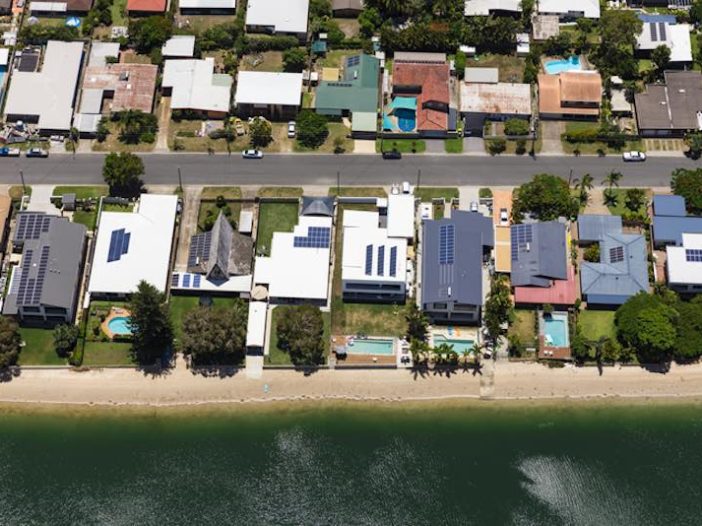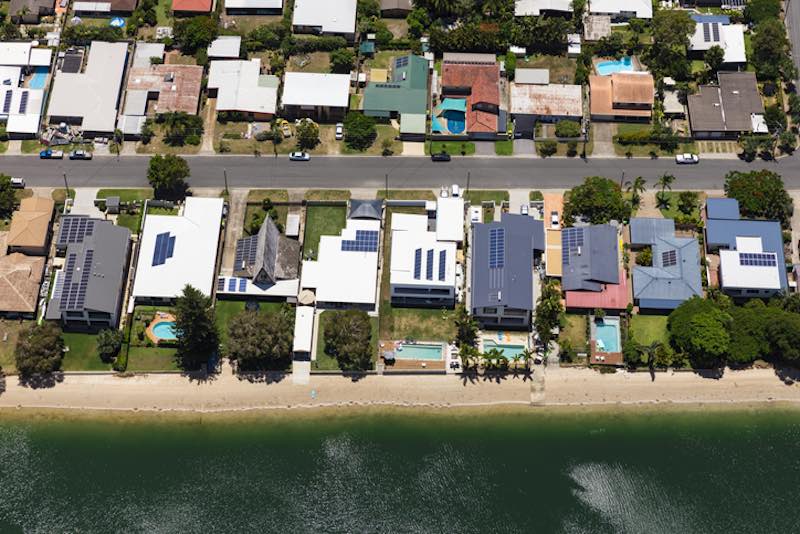
Trouble is brewing for Australia’s growing battery storage industry, with insiders saying that the latest version of residential battery installation guidelines propose excessive fire safety measures that – again – stand to make it almost impossible for households to install.
The Draft Standard for battery installation rules and safety guidelines, which is due to to be published at the end of August, is the latest iteration of a protracted – and not always harmonious – process, led by Standards Australia.
It follows the late 2017 scrapping of a previous draft that contained a controversial clause that threatened to effectively ban the installation of lithium-ion battery systems inside Australian homes and garages.
As we reported at the time, the offending Draft Standard, known as AS/NZS 5139, had suggested residential lithium-ion battery storage could only be installed in free-standing purpose-built “kiosks,” due to potential fire risk.
But it was scrapped after a major backlash from industry, which argued the rule was a major over-reach – particularly for li-ion batteries, which had a solid safety track record in established markets like Germany, in Europe.
This view eventually won the day, and the much-needed Draft Standard – which already lags well behind the pace of current uptake in the Australian market – went back to the drawing board.
At the time, Standards Australia said it had gathered together a group of senior industry and government leaders to get the introduction of residential on-site battery storage standards back on track, at what was a crucial time of growth for the industry.
“There was unanimous agreement in the room of the need to both encourage the uptake of new technology and manage community safety expectations,” said SA CEO Bronwyn Evans.
“The clear path forward set today will see us working hard and working together to get the relevant standards in place as soon as we can.”
But that path appears to have come to a cross-roads, with industry sources telling One Step this week that certain clauses in the new Draft Standard will have virtually the same impact as the scrapped “battery bunker” rule.
Specifically, the rules requires pre-assembled battery systems with a fire hazard risk of “not applicable” – and that includes most established li-ion systems, such as the Tesla Powerwall and batteries by sonnen – to use additional fire proofing material on installation.
And while this requirement, on first glance, might seem reasonable for safety’s sake – the addition of a sheet of compressed sheeting behind any BESS system that adjoins a habitable wall – the devil is once again in the detail.
According to documents seen by One Step, the first detail is that the non-combustible barrier – such as a sheet of compressed cement that must go between the wall and the battery – must extend 600mm further than the width of the BESS container on either side, and 900mm from the top of the container (see diagram below).

Another detail is that a pre-assembled integrated BESS cannot be installed within 600mm of any exit; within 600mm of any vertical side of a window, or any building ventilation opening to a habitable room.
Nor can it be installed within 600mm of any hot water unit, air conditioning unit or any other appliance not associated with the pre-assembled integrated BESS; nor within 900mm below any of the above items.
Further, the standard denotes that battery systems cannot be installed in ceiling spaces; wall cavities; on roofs except where specifically deemed suitable; under stairways; under access walkways; in evacuation or escape routes (such as a hallway); in areas of domestic or residential electrical installations; or in habitable rooms.
In the case of many popular battery systems, such as a Tesla Powerball 2 – which is 1150mm x 755mm x 155mm – these clauses stand to make installation on any inside or even outside walls of the average Australian household extremely difficult.
What’s more, industry insiders say the clauses are contradictory to other clauses within the standard that deem certain products as having no fire risk, and will send a mixed message to consumers about the safety of putting batteries in, or on, their homes.
On the one hand, as one industry insider who preferred to remain anonymous explained to One Step, the guidelines acknowledge that products from most major manufacturers of li-ion batteries like Tesla, sonnen and LG have zero fire risk and are safe to put in homes.
On the other, the clauses require costly and “absolutely ridiculous” fire proofing measures.
Major battery manufacturers argue this disregards the combined efforts and measures taken by their companies to ensure the safety of their products, including housing them in their own fire-proof containers.
Further, as was argued by battery companies last time around, they disregard the fact that hundreds of thousands of home battery systems have already been installed globally without a single fire hazard issue.
Underneath all of this lies the concern that the committee established to help set the standard for home battery installation has not been representative of key industry groups, including major battery manufacturers and installers.
There are also concerns that there is a lack of effective consultation, data analysis and communication between industry and the main proponents of the proposed fire safety measures, which are principally fire fighting services groups.
This sense that crucial regulations are being rushed through without proper consultation with industry has been a recurring theme in Australia’s renewable energy industry.
Most recently we have seen it in Queensland, where the commercial and large-scale solar industries continue to fight a government-led proposed safety amendment that would require PV panels to be mounted and fixed by licenced electricians.
As for the battery rule, industry sources say negotiations with Standards Australia over the contested clauses have hit a brick wall, and they will go to a vote as part of the latest Draft Standard.
Possibly the biggest risk from this is that the draft will again be voted down, which means it could be another year, or more, before the industry has a standard. And that’s not what anyone wants.

Sophie is editor of One Step Off The Grid and deputy editor of its sister site, Renew Economy. Sophie has been writing about clean energy for more than a decade.

